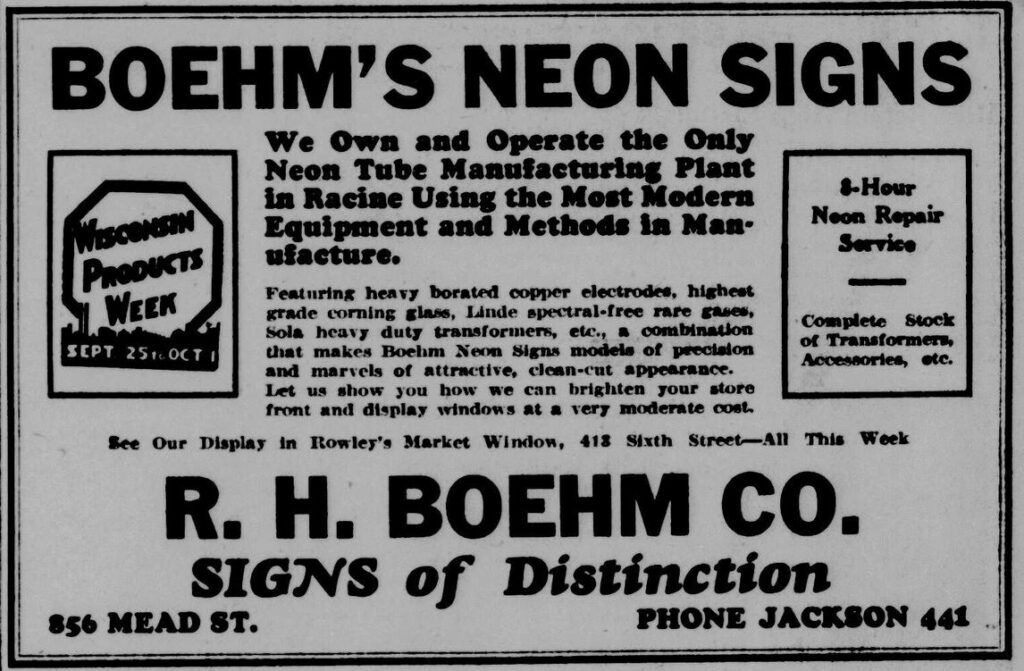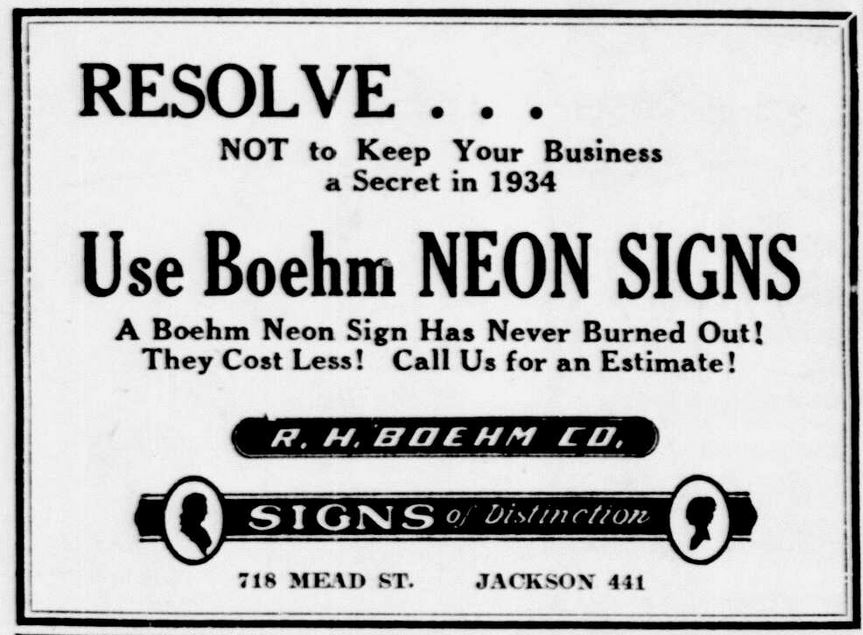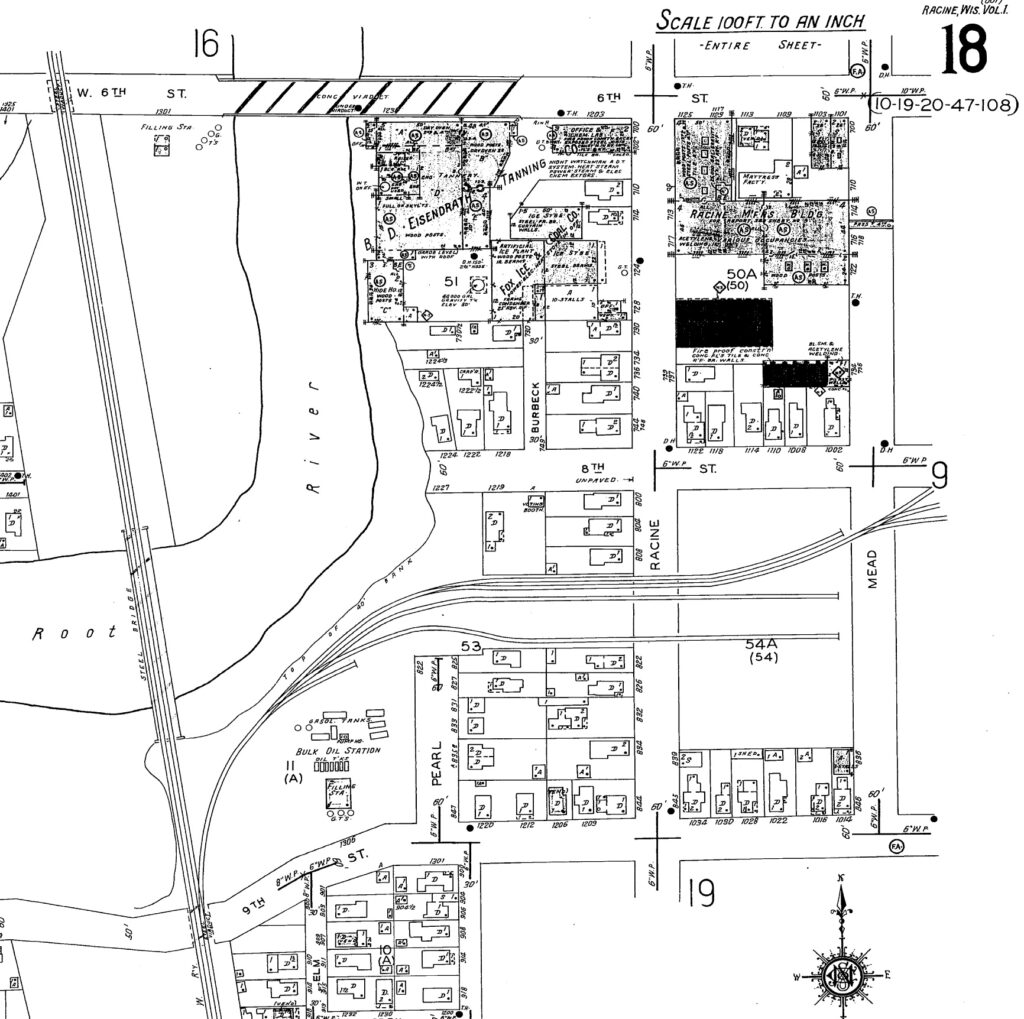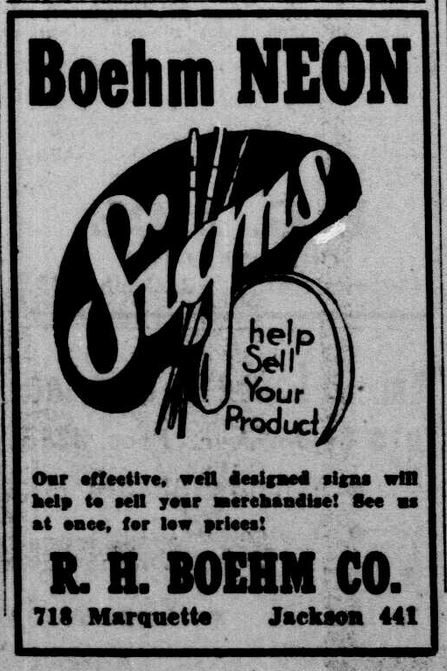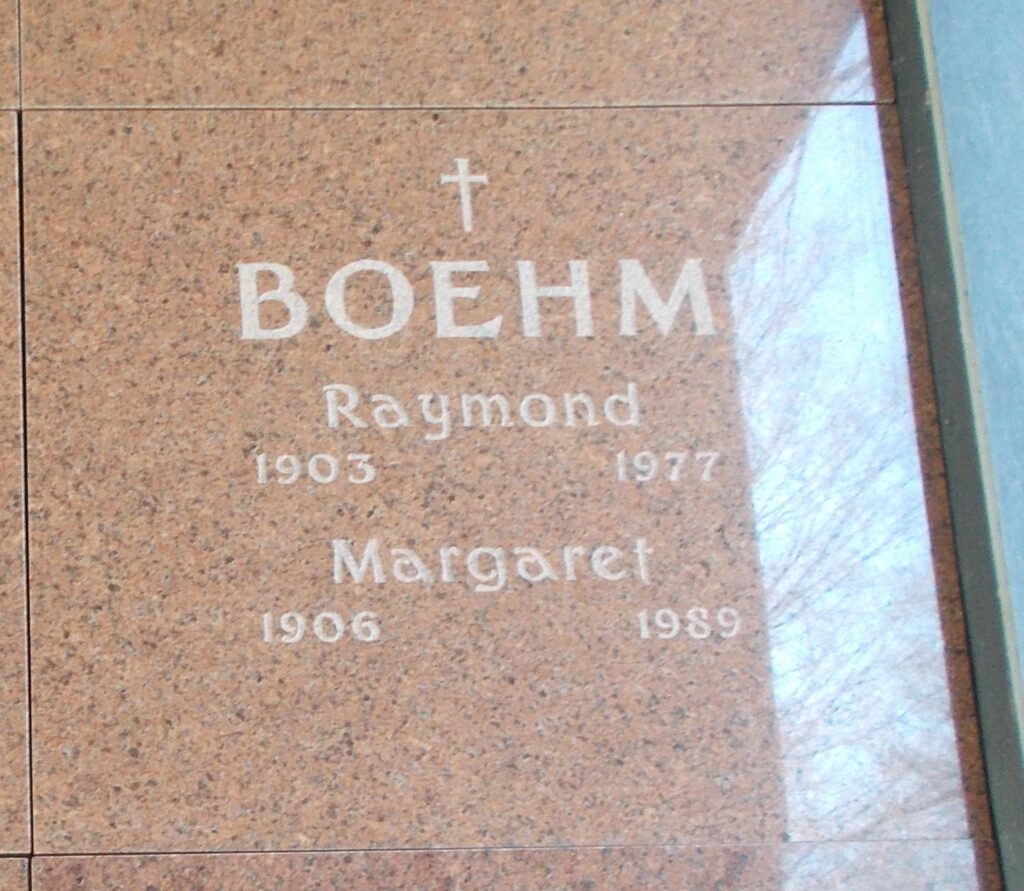
Herb Wag: I worked at Ray Boehm’s machine shop c1967-76 located across from the Bank of Elmwood. He still had a neon sign from his sign making days on the premises. Ray was quite a character.
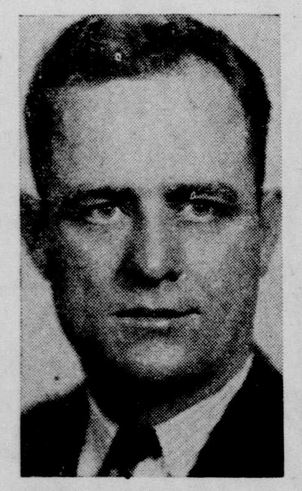
Creator of unusual and original Neon lighting effects, Ray H. Boehm, head of R. H. Boehm Co., is responsible for many of the outstanding lighting displays in Racine business establishments. The company is located at 718 South Marquette street and has been in business in this city since 1926. Endowed with the ability to create signs that are “different” and also in keeping with the modern trend, R. H. Boehm Co. has enjoyed a constant increase in volume of business from Racine and adjoining trade territory.
Suzanne Erickson Wallace: During the WWII years, he also made freezers in a factory a half block south of Sixth street on the west side of Marquette. After working a full day at the telephone company, my father would go to Boehms to work in the War effort. My mother also worked there during the war.

$13.50 in 1950 is about $151 in 2022 US dollars
Herb Wag: Do we know where this ad appeared? [Ed: found this ad by searching on eBay.] I remember those pistons. When I worked at Boehm company late 60s/early 70s there was still a box or two of them under an old workbench in the back of the shop. They also cut a few in half at the piston pin and used them around the shop as ashtrays. Ray was a chain smoker, unfiltered Camels as I recall. My dad said the pistons sold poorly and might have done better if Ray had made them for Fords or Chevys.
Herb Wag: After WW2 my returning veteran father also worked for R.H. Boehm Co. In the late 1950s when I was about 6 years old my dad took me to the Boehm Company on Marquette Street. All I recall is that it was in a big spooky old building with wooden floors. I never knew Boehm made freezers, but my dad did mention war work. I believe during the war Ray partly transitioned from sign making to making machine tool parts. Sometime in the 1950s he dropped signs entirely for precision machined parts for various bigger Racine companies like Dumore, Twin Disc, etc. The new small factory Ray built sometime before 1960 still stands just west of Pierce Woods off Lathrop Avenue across from Bank of Elmwood. They were easy going dudes and when I worked there as clean up boy during high school and college I brought my motorcycles inside the Boehm shop many times to work on them.
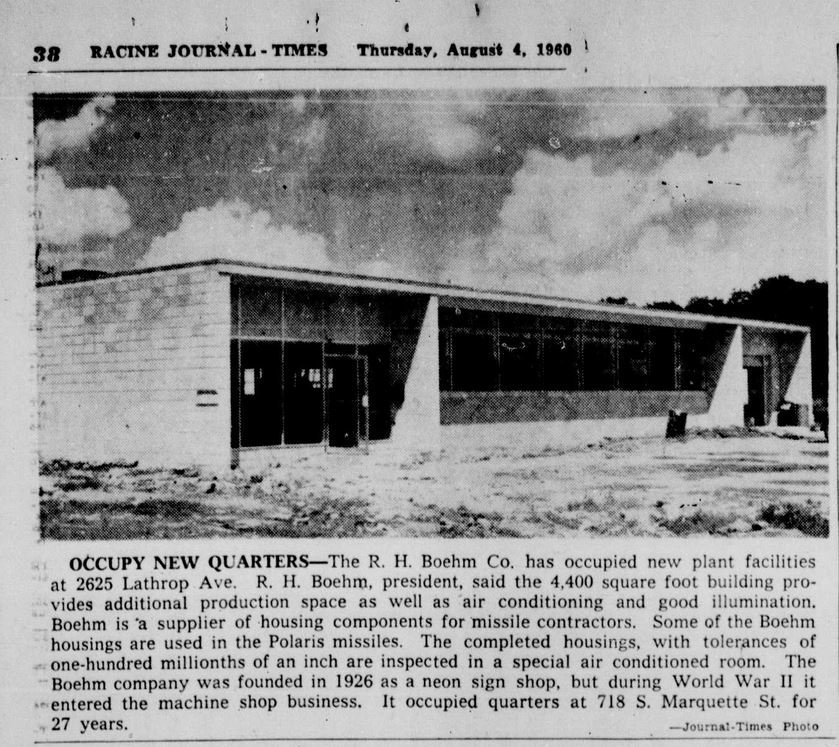
OCCUPY NEW QUARTERS
The R. H. Boehm Co. has occupied new plant facilities at 2625 Lathrop Ave. R. H. Boehm, president, said the 4,400 square foot building provides additional production space as well as air conditioning and good illumination. Boehm is a supplier of housing components for missile contractors. Some of the Boehm housings are used in the Polaris missiles. The completed housings, with tolerances of one-hundred millionths of an inch are inspected in a special air conditioned room. The Boehm company was founded in 1926 as a neon sign shop, but during World War II it entered the machine shop business. It occupied quarters at 718 S. Marquette St. for 27 years.
Herb Wag: Great article with specific dates! Interesting Polaris missile connection. By the time I worked there in late 1960s that had ended. Although the address was Lathrop Avenue, the Boehm building was set back in on a long common driveway. You turned into the driveway across from Bank of Elmwood, went past the Pittsburgh Plate Glass Company on the left and a welding place on the right, then came the Boehm shop on the left. You can’t see it from the street. Then there was another small factory on the right and at the end came Central Saw Company. On the right side of the photo you can see Pierce Woods Park in the background. On the front of the building below the shop windows were big metal letters: “R.H. Boehm Co.” Somewhere I might have a photo showing the building and name.
Herb Wag: Ray Boehm was also a Racine inventor. Around 1962 when I was 10 years old my father, who worked days at Boehm’s machine shop on Lathrop, took me there one evening when he was working on a small project of his own. I remember there being an automatic door opener inside the shop that operated continuously for testing purposes. I had lots of fun walking through it while playing with Ray’s stopwatch as the door quickly opened and closed itself. I had to move fast else the door would shut on me!
That swing-out style door opener was Ray’s own invention. It was operated by a hydraulic (oil-over-air?) cylinder contained in the head frame above the door and was normally activated by a person stepping on a black floor mat at the door entrance containing a pressure sensitive switch. When the door closed the released pressure made a hissing sound. After it was perfected Ray tried selling it to a larger company and sent them a complete working model for evaluation. My father advised him not to do that because they might steal the design, but Ray thought that they were reputable and sent it anyway. The big company rejected it and a couple of years later came out with their own door opener very similar to Ray’s. That resulted in legal action, but I don’t think Ray received any large settlement. Nor do I know if anything on his hydraulic opener was even patented.
Around 1971 Ray began work on a totally new door opener design. This was a simpler mechanical system using an electric motor bolted to a oblong cast aluminum box containing a train of 3 or 4 gears running in grease that operated an arm which opened the door. It too was mounted on the frame above the door but protruded out where you could see it. Ray completed a number of them and a few were operating around Racine in the 1970s. One was at Kortendick’s hardware on the North Side. But the gear door opener never went into full production.
By that time Ray was rapidly losing his eyesight. He had a big magnifying glass mounted on a lathe so he could read the dial. He was so desperate about his vision that he sought and obtained special government permission to import an experimental drug from the Soviet Union that he believed might restore his sight. By then I was in my last years at UW-Parkside but still working at Boehm’s shop evenings as cleanup boy. Since nobody else was around, I’d sometimes sit at Ray’s desk and read issues of Soviet Life magazine that Ray subscribed to. The lawsuit may still have been dragging on because there were letters from lawyers on his desk too.
